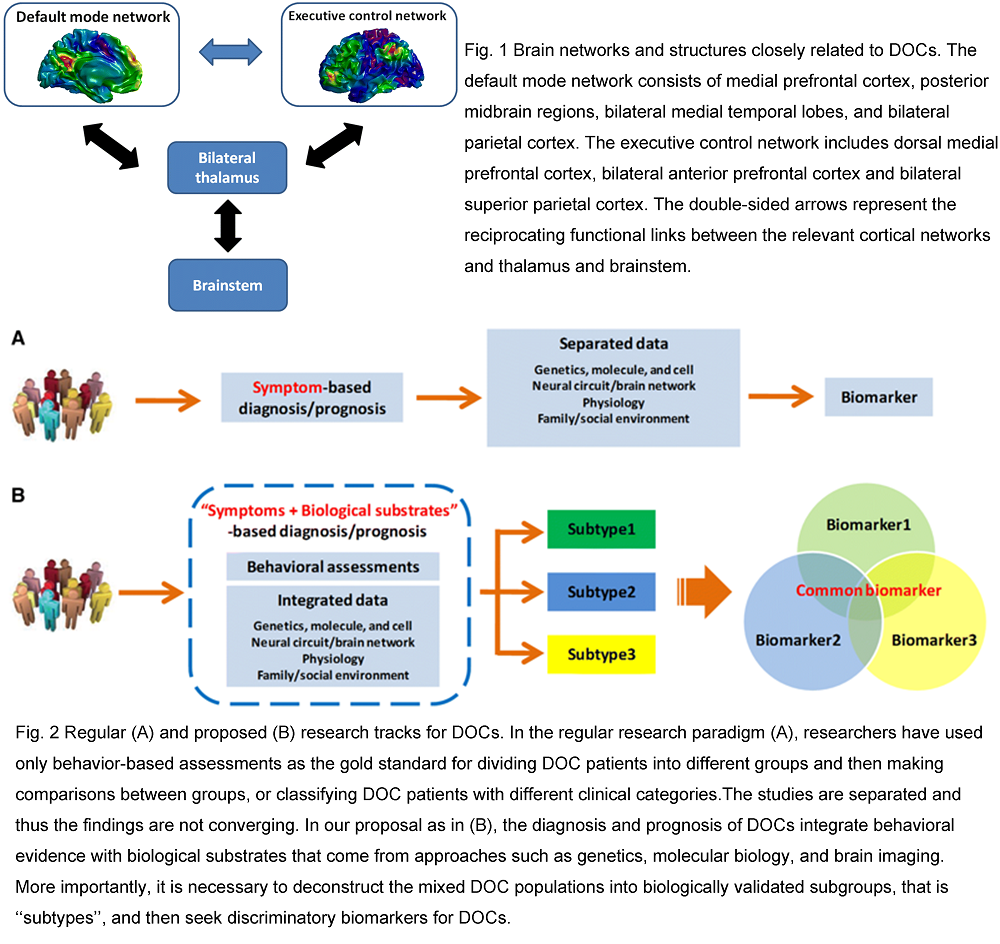Brain Network Studies in Chronic Disorders of Consciousness: Advances and Perspectives
Ming Song1,2 , Yujin Zhang1,2 , Yue Cui1,2,3 , Yi Yang4 , Tianzi Jiang1,2,3,5,6,7
1 National Laboratory of Pattern Recognition, Institute of Automation, The Chinese Academy of Sciences, Beijing 100190, China
2 Brainnetome Center, Institute of Automation, The Chinese Academy of Sciences, Beijing 100190, China
3 University of Chinese Academy of Sciences, Beijing 100190, China
4 Department of Neurosurgery, PLA Army General Hospital, Beijing 100700, China
5 CAS Center for Excellence in Brain Science and Intelligence Technology, Chinese Academy of Sciences, Beijing 100190, China
6 Key Laboratory for Neuroinformation of the Ministry of Education, School of Life Science and Technology, University of Electronic Science and Technology of China, Chengdu 625014, China
7 The Queensland Brain Institute, University of Queensland, Brisbane, QLD 4072, Australia
Abstract
Neuroimaging has opened new opportunities to study the neural correlates of consciousness, and provided additional information concerning diagnosis, prognosis, and therapeutic interventions in patients with disorders of consciousness. Here, we aim to review neuroimaging studies in chronic disorders of consciousness from the viewpoint of the brain network, focusing on positron emission tomography, functional MRI, functional near-infrared spectroscopy, electrophysiology, and diffusion MRI. To accelerate basic research on disorders of consciousness and provide a panoramic view of unconsciousness, we propose that it is urgent to integrate different techniques at various spatiotemporal scales, and to merge fragmented findings into a uniform "Brainnetome" (Brain-net-ome) research framework.
Keywords Disorders of consciousness, Neuroimaging, Brain network, Brainnetome

